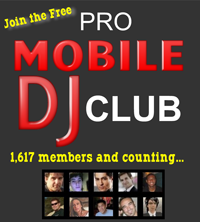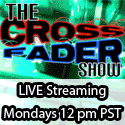by Dave Austin
You’ve Got To Have “Soul,” a word that has many meanings. In the world of pop R&B it usually means an intensely dramatic performance by a singer, delivered with such feeling that it reaches out and visibly moves the listener. The singer is saying something – often more than the lyrics convey. Soul is something which cannot be feigned. You either have it or you don’t.
Although closely related to R&B, soul differs primarily because of its mixing of the sacred (gospel) and the profane (blues) and its emphasis on vocalists. With cultural influences from African folk music, Negro spirituals and gospel, soul emerged as a definable music category during the 1950s.
Southern musicians and singers harvested material from racial, geographic, economic and historical sources as Memphis, and more widely the Southern U.S., gave birth to this enduring and pervasive music. Sam Cooke, Ray Charles & James Brown, all Southerners, are widely considered the “founding fathers” of soul.
As if experiencing a subdued gestation period during the 1950’s, soul exploded onto the airwaves and live venues in the ‘60’s and ruled the black music charts for a decade, leaving a legacy of influence which continues to inspire artists today.
As soul gained popularity, white musical groups picked up on the style and it became known as “blue-eyed soul.” This sub-genre, less often referred to as “white soul,” came about when white artist began to remake black music for mass audiences. These often-diluted covers were disparaged by some black musicians but praised by others as positive growth of the music.
Among the artists most associated with establishing blue-eyed soul are the Righteous Brothers (“You’ve Lost That Lovin’ Feeling”) and Timi Yuro (“Hurt”), and from the U.K., Tom Jones and Dusty Springfield. In 1975, Tower of Power became the first a white/mixed group to appear on Soul Train, the influential Chicago-based music/dance TV show which featured live performances by the top black artists of the day. David Bowie followed TOP on the show shortly afterwards.
Again, primarily in the Southern U.S., “Country soul” arose, in large part, because strong religious beliefs made gospel highly influential to both blacks and whites, and musical mixing was more likely to take place in the South than other areas of America.
Established R&B artists such as Arthur Alexander and Solomon Burke had already been exploring this style during the 1960’s. Then, in 1962, Ray Charles recorded his landmark album, “Modern Sounds In Country and Western,” making the commercial breakthrough for this genre.
Over the years we’ve also experienced “psychedelic soul,” “inspirational soul,” “funk soul,” “neo-soul” “rare groove or deep soul” and a plethora of variations. Even though soul’s popularity has waned in recent years, its influence is still widely heard today, and there are those who claim the form is making a comeback.
Some of the current artists representing contemporary soul are Monica (“Everything To Me”), Usher (“There Goes My Baby”), Dondria (“You’re The One”), R. Kelly (“When A Woman Loves”).
As a DJ, I find no shortage of requests for soul music - especially from folks over age 40. Those who enjoy and appreciate soul music can take comfort in knowing that it has not gone away – it has simply evolved.
Dave Austin – Music Professor
Dave Austin began his career at age 13 at a small, hometown radio station. He went on to graduate from the University of Southern Mississippi with a Bachelor’s degree in broadcasting.
Since that time, Dave has been a mobile and radio DJ, radio station Program Director, and a TV news reporter and anchorman. He has also done voiceover work for documentaries and commercials.
In 1986 Dave’s longtime passion for music prompted him to start “Southern Celebrations DJs,” a multi-system mobile entertainment company serving clients in Tennessee, Northern Georgia and Northern Alabama.
You can email him c/o [email protected] or visit his website – Moonlight Mobile Music.
![]() Tweet This Post
Tweet This Post








